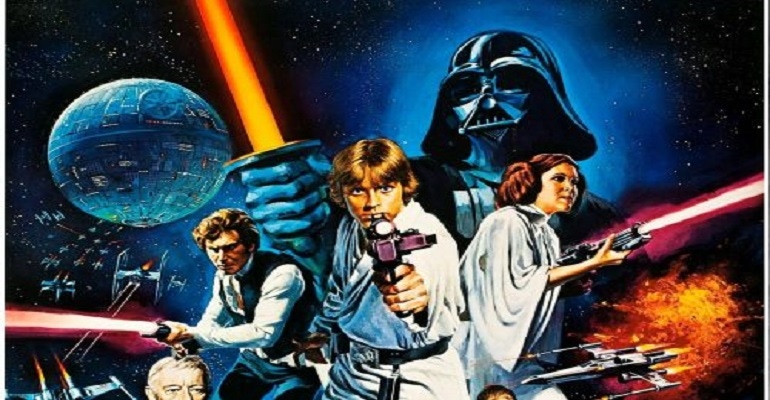In 1977, “Star Wars” offered a potpourri of amazing special effects using camera tricks and models.
May 3, 2023

“May the force be with you” is celebrated every May 4th. This year we decided to use the holiday to explain how director George Lucas created his stunning universe long before the emergence of computer-generated imagery (CGI).
“Star Wars” (retroactively titled “Star Wars: Episode IV – A New Hope”) was released in 1977. George Lucas had been dreaming about making Star Wars since 1971 after he finished his debut feature, a much smaller-scale sci-fi film THX 1138. He was inspired by Flash Gordon and thought he would make an updated version of the early space character. He ran into intellectual property issues and switched his vision to original characters.
Building the Design Team
Lucas recruited several conceptual designers, including Colin Cantwell, who worked on “2001: A Space Odyssey” (1968), to conceptualize the initial spacecraft models. Lucas also tapped Alex Tavoularis to create the preliminary conceptual storyboard sketches of early scripts. Lucas recruited Ralph McQuarrie to visualize the characters, costumes, props, and scenery. McQuarrie's pre-production paintings of certain scenes from Lucas's early screenplay drafts helped 20th Century Fox visualize the film. McQuarrie's images impressed the executives sufficiently to get the movie its green light.
Lucas formed the visual effects company Industrial Light & Magic (ILM) after discovering that 20th Century Fox’s visual effects department had been disbanded. ILM began its work on “Star Wars” in a warehouse in Van Nuys, Calif. Most of the visual effects used pioneering digital motion control photography developed by special-effects artist John Dykstra and his team. They created the illusion of size by employing small models and slowly moving cameras.
This video goes into the details involved in special effects such as matte painting and compositing.
One of the most important practical effects used throughout the original Star Wars trilogy was matte paintings. The decades-old technique allowed Lucas to shoot awe-inspiring wide shots without building massive – and expensive – sets.
The space battles in the film were created by the new technology of compositing. Dykstra created a camera system that was dubbed the Dykstraflex. The system allowed artists to program camera movements that could be replicated over and over again with precision. The camera could move around, and the perspective from shot to shot in the composite would match.
About the Author(s)
You May Also Like





